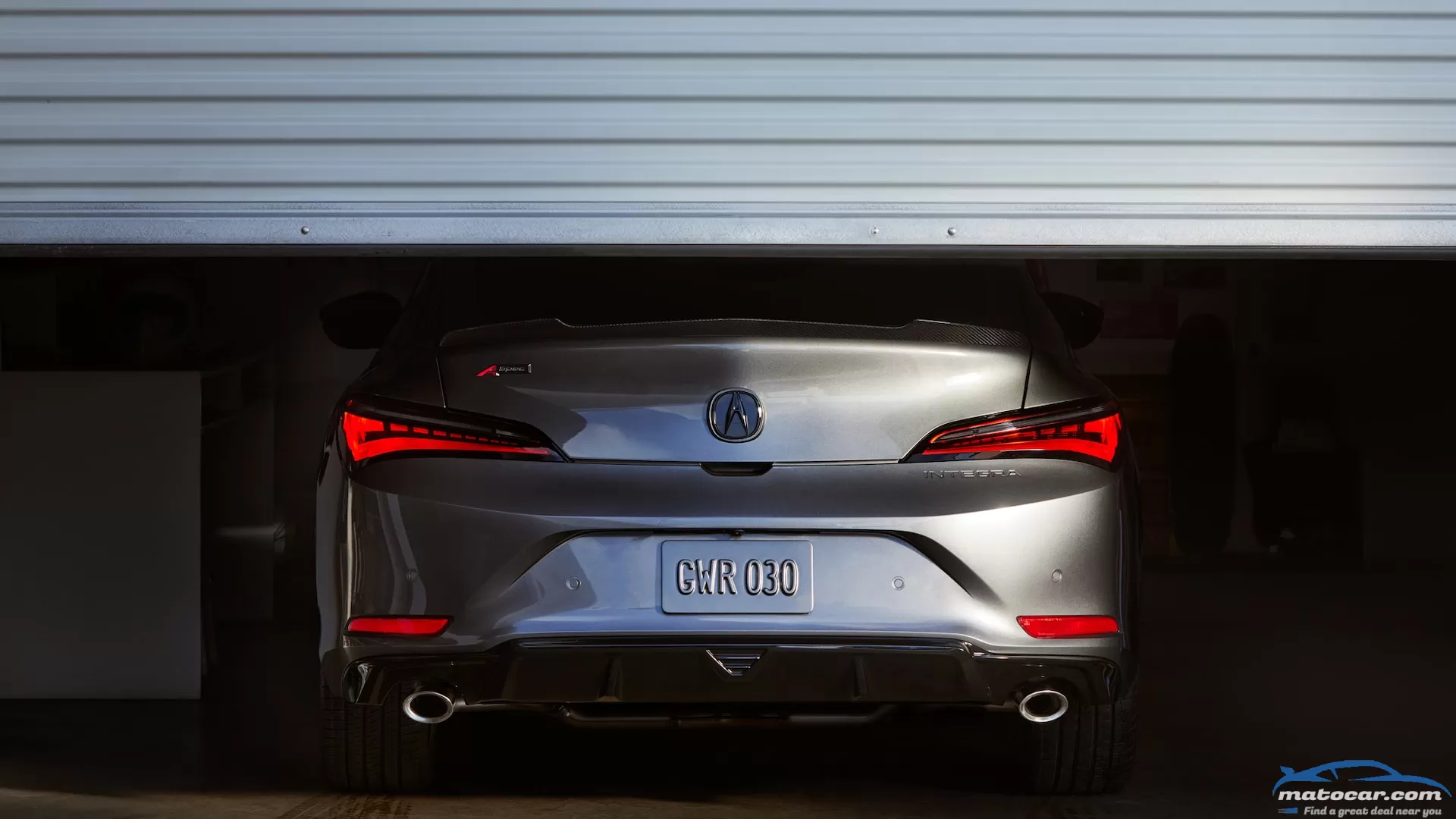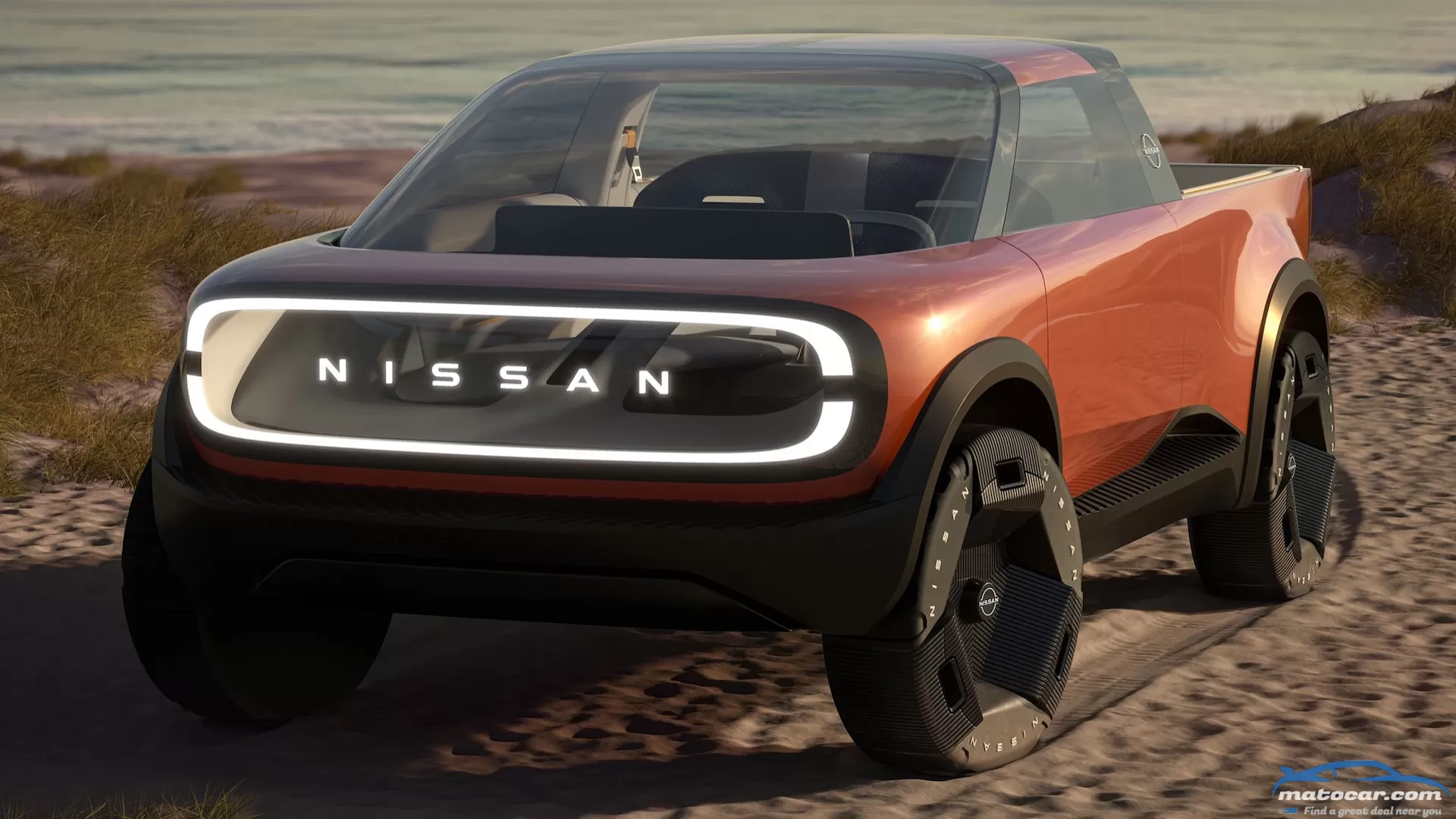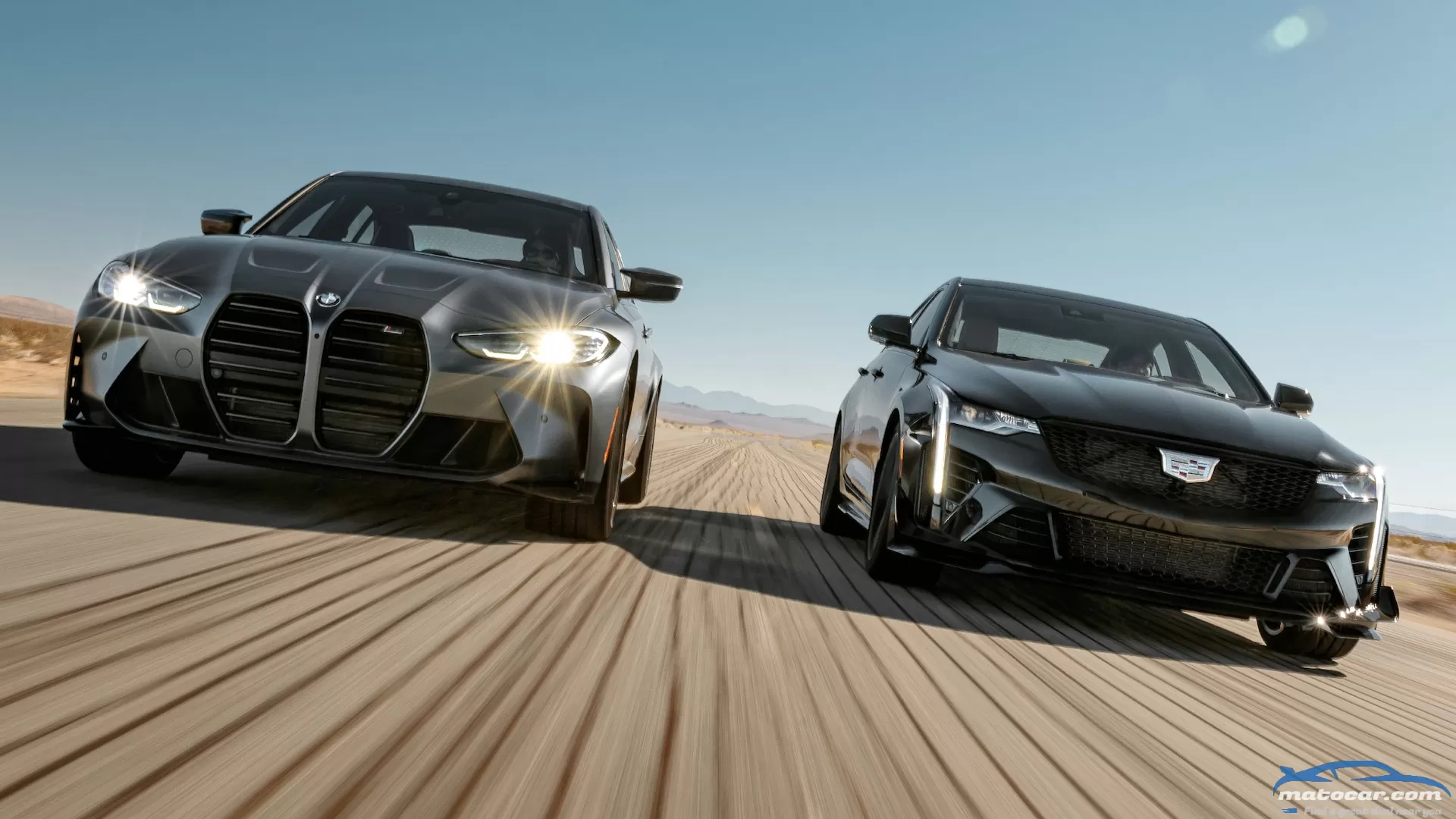Why the 2023 Acura Integra's Exhausts Are Shaped Like Curly Fries

If you were to find yourself beneath a new 2023 Acura Integra—or the mechanically related Honda Civic Si—we sure hope it's not because you were just run over. In that case, you might have more pressing things to worry about than the odd routing of the dual exhausts under the back bumper. But, hey, pretend you're on the ground, under an Acura or a Honda, wondering why there are pipes aft of the exhaust outlets shapes like curly fries. We were similarly curious (having put ourselves on the ground, under an Acura Integra, on purpose) and did some digging with Acura for answers.
What Does a Normal Exhaust Look Like?
Normally, exhaust piping follows relatively straightforward routes from the engine to wherever the gases are intended to exit—usually the car's rear end. This typically manifests as straight-as-possible piping leading from the headers, which collect gases from each of the engine's cylinders in individual pipes and merge them into one or two outlets that flow into a catalytic converter, to a series of resonators (for shaping or quieting the noise) and mufflers and, finally, the tailpipes.
There are a few bends here and there, mostly so the piping can clear things like the rear suspension, the fuel tank, or other obstacles, but conventional wisdom holds that they don't double back on themselves or otherwise make any unnecessary trips side-to-side.
How the Acura Integra's Exhaust Looks
The Integra's post-cat piping (aft of the catalytic converters) is a bit different. As we mentioned previously, this setup is nearly identical on the Honda Civic Si, which shares a platform, engine, transmission, and general layout with the new Integra. While the piping follows a relatively traditional central pathway rearward, toward the back of the Integra, via a small tunnel, upon reaching the rear axle area, it splits into a T-shape, with one pipe turning to the right and another to the left.
These two pipes bend slightly rearward and lead to small resonators, one per side, before taking a 120-ish-degree bend toward the vehicle centerline, followed by another (by which point the pipes are now flowing toward the front of the car), followed by another bend that points the piping back to the side of the car, and finally a gentler 60-ish-degree bend that spits the exhaust straight back, out from beneath the Integra's rear bumper. Why?
According to Honda, those squiggles in each exhaust outlet are, in fact, silencers. They serve essentially the same function as a muffler—Honda calls them "coiled-type silencers"—and their curious shape is highly intentional. While, like everything on a modern vehicle, their shape is somewhat influenced by the allowable space within the bumper and underbody area behind the rear axle, the specific pathway that piping takes plays a crucial role in the surprisingly guttural low-rpm sound the Integra and Civic Si make.
By snaking the exhaust piping into that circular route, Honda is lengthening the exhaust pathway, lowering the resonance frequency without using a traditional muffler . Honda engineers tell us that the design as first installed in the Si also emphasizes the 300Hz to 600Hz frequencies "to deliver a more aggressive sound." Skipping the muffler, Honda also was able to achieve that sound with a 27-percent increase in exhaust flow.
Good Vibes, Different Volumes
The old Honda Civic Si, you'll recall, featured a central-exit exhaust that spit gases from two tailpipes clustered at the center of the bumper. Compared to the new Si and its Integra sibling, it used two large mufflers in a somewhat unusual configuration: The same central post-cat piping flowed into a T-split, with each pipe flowing into the end of a transversely arranged muffler, one on each side of the car. Gases exited those mufflers about an inch from the inlets, reforming into a T before the piping exited the back of the car.
Doing some visual measurements—okay, by the seat of our pants here—the new, muffler-less exhaust setup has more piping. I.e., it's longer, mostly by replacing the old car's length of muffler with pipe, and then spinning that around into loops at each rear corner of the car. It's cool to see the progression of this concept by the engineers, as the new and old setups are clearly somewhat related, only the new version sounds much better, particularly at idle and lower engine speeds. And that's all things being equal, literally. The new and old Si, and by extension, the Integra, utilize the same turbocharged 1.5-liter I-4 engine, and the 11th-generation Civic's platform—again, shared with the Integra—is a modified version of the 10th-gen setup. We didn't note any untoward booming, either, despite the exhaust note being audible in both the Honda and Acura at highway speeds.
For higher-rpm duty, Honda and Acura lean on Active Sound Control—in essence, augmented engine noises and, in the Acura, some active sound cancellation via the audio speakers—to amplify good noises and tamp down on less desirable ones. The tuning of these setups are different in each car; the Honda notably amplifies the engine note, more so in its Sport drive mode. In the Acura, we're told that augmentation was turned way down, with the focus pivoted from outright sporty volume to shaping the noises already in play for a more refined effect.
Of course, the sounds made by the 2023 Integra or the Honda Civic Si are only small parts of both compact cars' appeal. The Si is clearly sportier than the Integra, with a firmer ride and louder augmented noises and no available automatic transmission (you'll get the best-shifting six-speed manual available this side of a Porsche and like it), while the Integra delivers most of the Si's athleticism with greater overall comfort, refinement, and richer features. Both are fun to drive, attractive small cars. And owners of either one can blow plenty of hot gas about how weird their exhausts are.
You may also like
WHAT THEY ARE: It's getting tough to keep track of which automaker has promised a flood of electric vehicles over the near term, how many EVs each one has pledged, and by exactly when. So, what's Nissan up to? The Japanese carmaker is spending nearly $20 billion to deliver 20 electrified vehicles in the next four years, and it aims for 15 fully electric models (among 23 all-new vehicles for Nissan and Infiniti) by 2030.The automaker recently previewed a smattering of concept vehicles representing potential EVs, including a pickup truck, an SUV-ish thing with van-like sliding doors, and even a two-seat roadster. Each of these carry ephemeral names such as Chill-Out, Hang-Out, and Max Out. We figure the production versions, if indeed these concepts directly preview electric cars and trucks coming in the next few years, will have normal designations—or they might even outright replace various existing Nissan nameplates.WHY THEY MATTER: Nissan's next-generation Leaf might be previewed by the Chill-Out, a small crossover EV that uses the same CMF-EV architecture as the 2023 Ariya SUV. Transitioning the Leaf into a taller, more appealing vehicle than the dumpy hatchback it is today makes so much sense, it'd be shocking if Nissan weren't thinking about it.Far and away the most consequential future Nissan—besides the next-generation Leaf—is the electric pickup truck almost certainly bound for production. It might not look exactly like the Surf-Out concept here, which is a virtually sales-proof two-door regular cab with digital panels front and rear including not only the headlights and taillights but also lots of display space for animations and such.The front panel is also translucent, offering a view from the cabin all the way out the nose. Perhaps the general shapes on this concept will carry over to a four-door, midsize-ish pickup to be sold alongside the Frontier. But no matter what form it takes, the truck is the concept we'd prioritize.PLATFORM AND POWERTRAIN: Other than their cool-vibes names, Nissan's EV concepts showed off novel packaging and fanciful solid-state batteries that, as of today, don't exist in a production vehicle. Nissan is working on the tech, which promises better energy density, lower cost, and quicker charging, but we figure that come 2025, the first round of the automaker's EVs is going to run on conventional lithium-ion tech, as found in the Ariya. That production SUV also is likely to donate its dual-motor drive system to a host of upcoming Nissan EVs.ESTIMATED PRICE: $30,000-$50,000EXPECTED ON-SALE DATE: 2024-2030
UPDATE 3/4/22: "The Batman" is now in theaters, racking up a respectable 85 percent fresh rating on Rotten Tomatoes and appearing to be on a trajectory to cash in at the box office. But, for our purposes, the star of the movie isn't Robert Pattinson—its the muscular Batmobile, with its mid-mounted engine and an overall vibe that wouldn't be too out of place in a Mad Max film. And, like any good Batmobile, it seems to be a central part of the film, speeding through a Gotham City that's as dark and moody as ever, launching baddies' vehicles into the air to land with an explosive thud. Whet your appetite with a longer, more recent trailer below. "The Batman" opens today in theaters, and will hit the HBO Max streaming service in mid-April. The Batman director Matt Reeves just revealed the new Batmobile on Twitter, and it's a definite departure from past movie cars. The movie press had earlier heard rumors that the new Batmobile would be more of a muscle car than the military-inspired Tumbler that appeared in Christopher Nolan's Dark Knight film trilogy. That is exactly what we have here, although the mid-mounted engine is a bit of a surprise.What we can see resembles a lot of different classic muscle cars, and that's probably intentional. The deeply recessed front headlamps have a generic late 1960s look to them: a bit of Mopar, a bit of Mustang, maybe even a hint of De Tomaso Mangusta. Extremely swoopy rear fenders with pointed trailing ends that hang over three-element taillights are the closest thing we get to a traditional Batmobile motif. The rear tubes of a roll cage poke through the C-pillars and trailing edges of the roof. It is likely completely custom bodywork over a tube frame or donor chassis, so there's probably not a single recognizable base underpinning this creation.The longitudinally-mounted engine aft of the cabin is an enigma, but an awesome one. It appears to be a V-10—an OHV unit—with a couple of immense turbochargers that dump straight into the atmosphere behind the roof. If the movie magic gods are kind, it'll spit two tongues of delicious fire with every throttle blip. This Batmobile will be neither inconspicuous or quiet. There's obviously some extraneous fantasy bits tacked on to make it look more futuristic, but it seems like a real motor under there.Remember, there are usually several movie cars built for various purposes: stunt cars that can take a jump without disintegrating, "hero" cars that look good in close-ups, a rig that makes it look like our new Batman (Robert Pattinson—yes, that guy, from the sparkly vampire movies) is actually driving it even though it's grafted to the front of some other vehicle. This is probably a "hero" car, so the wild-looking engine might not be what motivates the running/driving ones.Even so, the Mad Max meets Fast and Furious vibe this new Batmobile gives off is a solid hint that this will be a movie that appeals to car enthusiasts on a deeper level. This reboot, the umpteenth since the 1989 Tim Burton movie, focuses on a more youthful Bruce Wayne/Batman with a greater focus on his detective work. There's surely going to be a lot of fighting, and given the unique direction that this Batmobile's design takes, we hope that there will be a lot of driving, too.Update: This post, which originally published on March 4, 2020, has been updated with the latest trailer for "The Batman".
It's time to present the finalists for the inaugural MotorTrend Performance Vehicle of the Year. Yes, after running through our contenders—those rides that missed the cut for the final round of voting the PVOTY honors, we're introducing those that did make the finalist cut. One of these vehicles earned our Golden Calipers, having excelled in all six of our criteria (safety, value, advancement in design, engineering excellence, efficiency, and performance of intended function). The weighting of some of those criteria may differ slightly from our Car, Truck, and SUV of the Year competitions—after all, when outright performance is our focus, efficiency is perhaps graded on a curve—but every single one is considered when choosing our winner.Read on to meet the first four members of our finalist field—the rest will be unveiled tomorrow—to represent the cars that made it out of our initial round of voting following evaluations at Hyundai's Proving Ground outside of Los Angeles. The finalists then went on to road drives on Angeles Crest Highway and, later, grueling track tests at Willow Springs Raceway. Come back on Monday, February 14 to see which one emerged with the title!




0 Comments